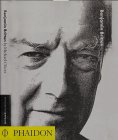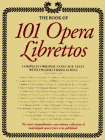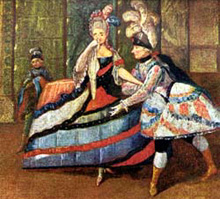

|
view operas online! |
||
|
Learn how and why Ancient Rome, Greece and Egypt were invented and crafted during Renaissance. Discover the Old Testament as a veiled rendition of events of Middle Ages written centuries after the New Testament. Perceive the Crusaders as contemporaries of The Crucifixion punishing the tormentors of the Messiah. What if Jesus Christ was born in 1053 and crucified in 1086 AD?
|
|
|
It might seem that opera, as it developed in Western Europe in the late 16 th century, was all a terrible mistake. The interests of the time, scientific and cultural, had brought close attention to the world of ancient Greece and Rome, but if opera was ever intended as a revival of classical Greek tragedy, then it was singularly wide of the mark. Opera, in fact, reflected elements of classical Greek and Roman thought and practice, but had an equal debt to its own immediate predecessors and to the society in which it developed. Before Opera
In the 16 th century there was nothing particularly new about drama and nothing new in the combination of music and drama. Such a combination had had a place, after all, in medieval Christian liturgy, with plays and music re- enacting events associated with Easter and with Christmas. From this a larger repertoire had grown, with plays based on events recorded in the Bible or derived from Christian tradition. Music was associated with dramatic action in secular performances of one sort or another. Court entertainments of various kinds took place in which elements of drama and music were combined. An extravagant example is recorded in accounts of the Feast of the Pheasant in Burgundy in 1454. A court banquet was given as an attempt was made to arouse interest in a Crusade, after the Turkish capture of Constantinople. On this occasion singers in the guise of musical blackbirds emerged from a giant pie for the edification of the guests. Such diversions, whether primarily political or artistic, took place throughout Europe. The essential difference in the new art of opera lay in its developed dramatic structure. This, in turn, was associated with a much more dramatic style of music, drawing on the classical art of rhetoric, the art of public speaking, which, nominally at least, formed part of the new education. The period now known as the Baroque developed in the last decades of the 16 th century. It is distinguished, above all, by the development of what has become known as dramatic monody. Here a simple form of melody closely follows the rhythms and intonations of speech, accompanied by simple if occasionally startling chords. The new technique of composition made opera possible. Plays with songs and dances were one thing, but works providing a dramatic combination of words and music throughout were something different. |
|
| top
|
|


 View JULIUS CEASAR HIGHLIGHTS
View JULIUS CEASAR HIGHLIGHTS